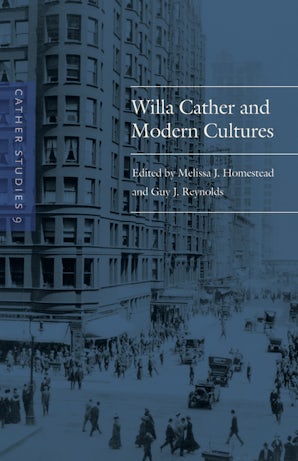
328 pages
8 illustrations
October 2011
978-0-8032-3975-3
$40.00 Add to CartEditorial Policy
Introduction
Melissa J. Homestead and Guy J. Reynolds
1. Willa Cather in and out of Zane Grey's West
John N. Swift
2. Thea's "Indian Play" in The Song of the Lark
Sarah Clere
3. "Jazz Age" Places: Modern Regionalism in Willa Cather's The Professor's House
Kelsey Squire
4. Changing Trains: Metaphors of Transfer in Willa Cather
Mark A. R. Facknitz
5. Chicago's Cliff Dwellers and The Song of the Lark
Michelle E. Moore
6. Willa Cather and Henry Blake Fuller: More Building Blocks for The Professor's House
Richard C. Harris
7. Cather's "Office Wives" Stories and Modern Women's Work
Amber Harris Leichner
8. It's Mr. Reynolds Who Wishes It: Profit and Prestige between Cather and Her Literary Agent
Matthew Lavin
9. Thea at the Art Institute
Julie Olin-Ammentorp
10. Art and the Commercial Object as Ekphrastic Subjects in The Song of the Lark and The Professor's House
Diane Prenatt
11. "The Nude Had Descended the Staircase": Katherine Anne Porter Looks at Willa Cather Looking at Modern Art
Janis P. Stout
12. "The Cruelty of Physical Things": Picture Writing and Violence in Willa Cather's "The Profile"
Joyce Kessler
13. "Before Its Romanzas Have Become Street Music": Cather and Verdi's Falstaff, Chicago, 1895
John H. Flannigan
Contributors
Index